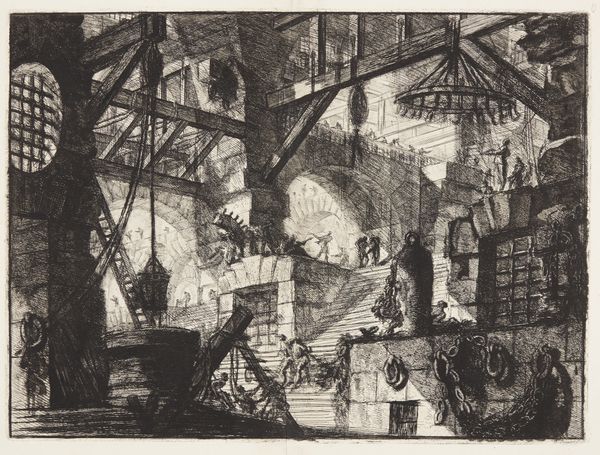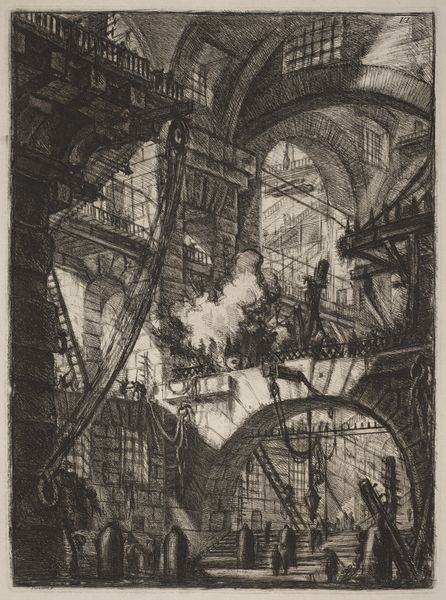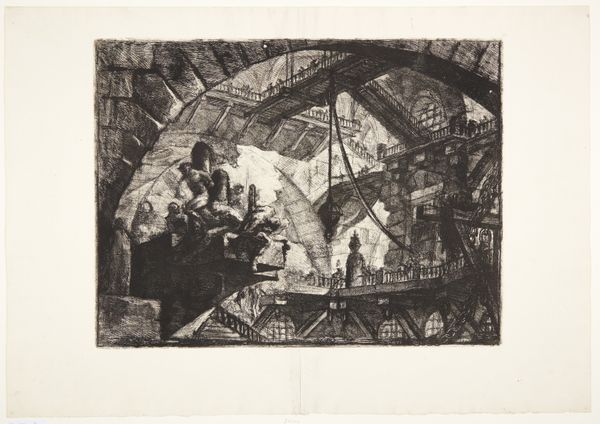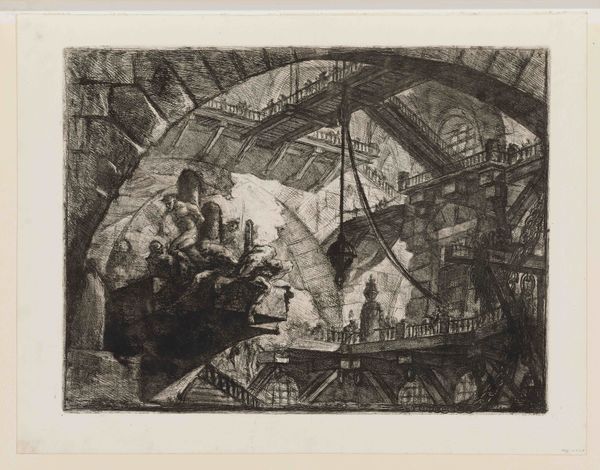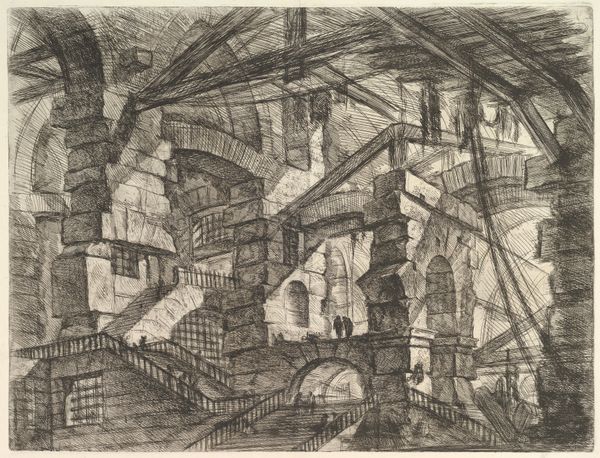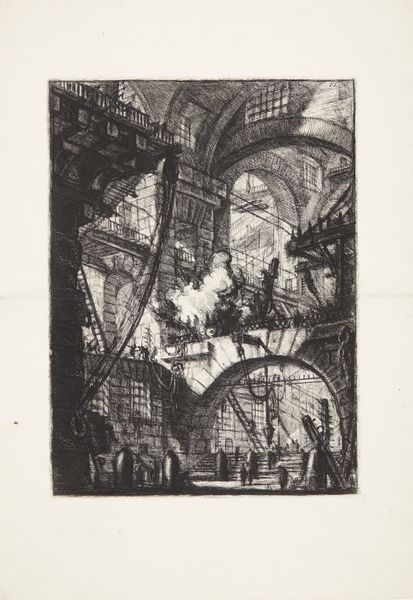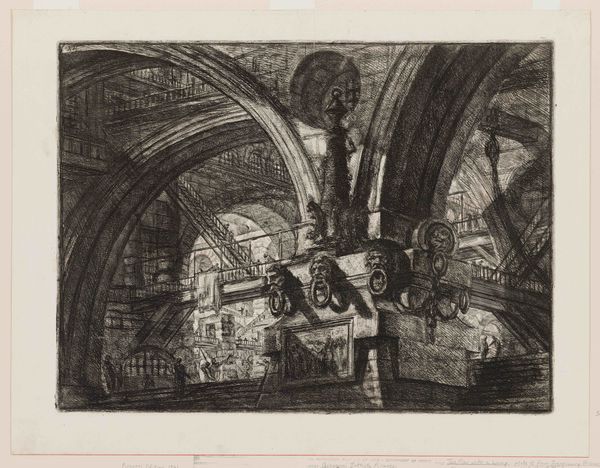
Prisoners on a Projecting Platform, from "Carceri d'invenzione" (Imaginary Prisons) 1744 - 1755
0:00
0:00
drawing, print, engraving
#
drawing
# print
#
form
#
romanesque
#
line
#
cityscape
#
history-painting
#
engraving
Dimensions: Sheet: 19 1/2 x 25 3/16 in. (49.5 x 64 cm) Plate: 16 1/8 x 21 1/4 in. (41 x 54 cm)
Copyright: Public Domain
Editor: So this is Giovanni Battista Piranesi's "Prisoners on a Projecting Platform" from his *Carceri d'invenzione* series, created between 1744 and 1755. It’s an engraving… The scene feels so oppressive, a never-ending labyrinth. What strikes you when you look at this piece? Curator: The lasting impression stems from its recurring architectural motifs and its inhabitants’ emotional burden, which have become entrenched as part of our cultural psyche. The architectural elements—arches, stairs, and platforms—serve as symbols. Do you see how these components evoke notions of aspiration, ascent, or connectivity, yet trap those who walk along them? Editor: Definitely. They seem caught, like flies in a spiderweb. Curator: Piranesi, rooted in both history and psychology, encourages viewers to confront universal anxieties. Note how the architectural spaces become containers of human emotion. The etching's dense network of lines may unconsciously stir viewers, creating associations with containment. Even in what may appear to be an invitingly grand space. How might you explain this dissonance? Editor: I think it's the detail that is unnerving. He's not just showing grand arches, but people in shadow, impossible architecture...a maze of futility. The image haunts me long after I’ve stopped looking. Curator: Exactly! The maze transcends literal confinement and mirrors psychological complexities and social conditions, as viewers are invited to meditate on humankind's past follies. Editor: This makes me think about how enduring certain symbols of oppression can be across time. Thank you for unpacking the symbolism in this image with me. Curator: Indeed, it's remarkable how Piranesi taps into this cultural memory through these compelling visual symbols.
Comments
No comments
Be the first to comment and join the conversation on the ultimate creative platform.
